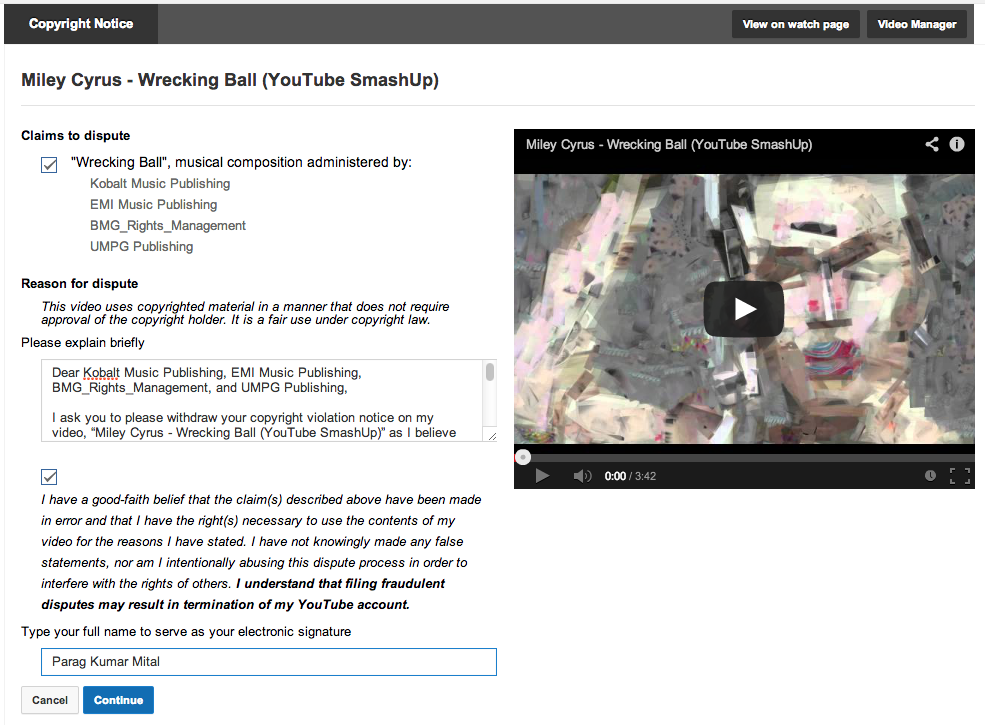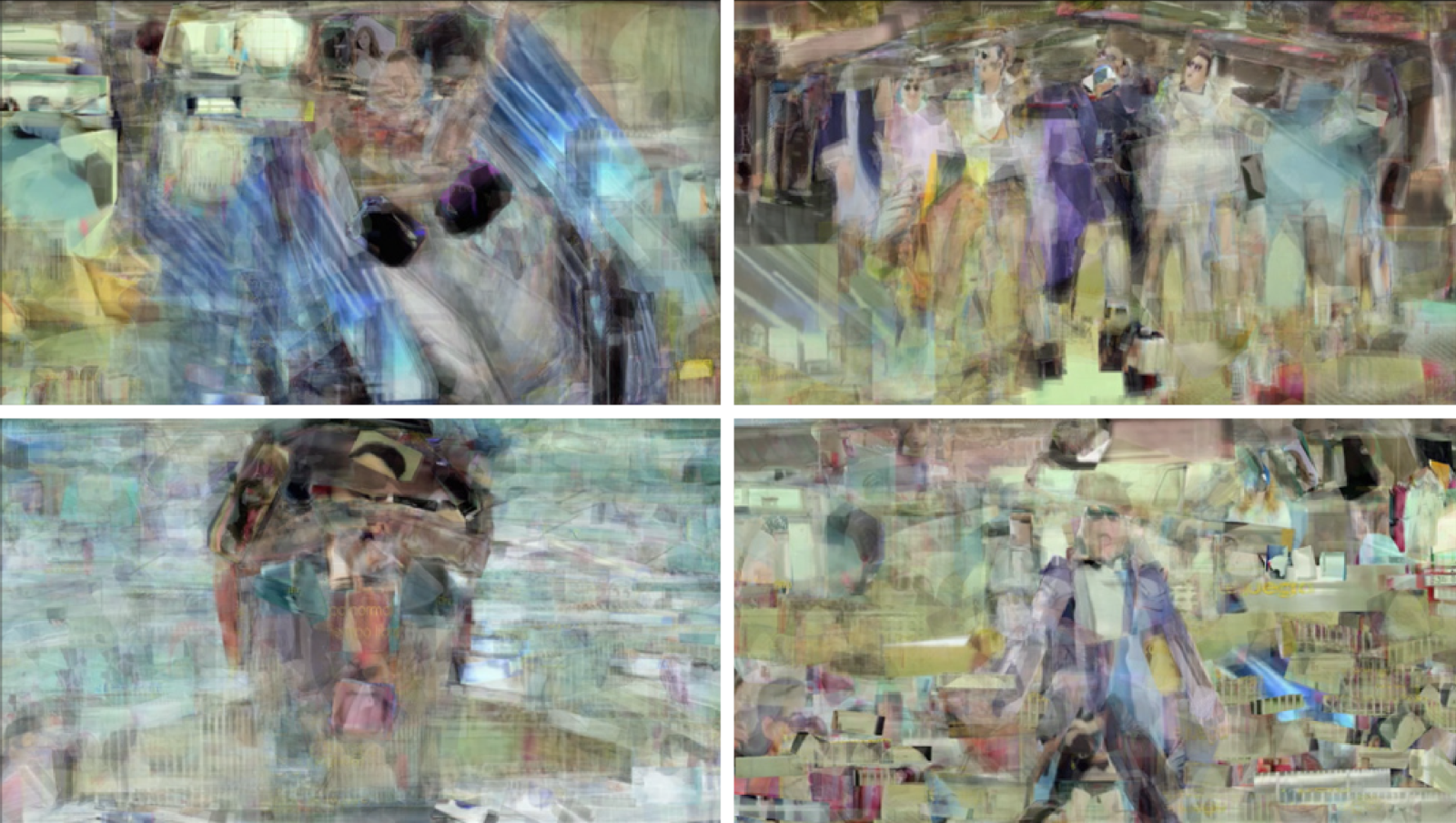In his artwork, “YouTube Smash Up,” Mital re-applied his previously developed auditory and visual models to create a generative virus for YouTube. The models attempted resynthesizing the #1 most viewed video on the platform using only content from the remaining Top 10 videos. The idea was to continue resynthesizing, maybe forever, until the video landed in the top 10 and resynthesized itself.
Unfortunately, the project faced significant challenges due to numerous copyright infringement claims filed against Mital. One copyright infringement case involved using content related to Miley Cyrus’s top video “Wrecking Ball.” In this instance, it was the musical arrangement that triggered YouTube’s response. Finding a human who would have recognized the audio as “Wrecking Ball” would have been quite a challenge, but to a robot, it was.

As a consequence for his “copyright infringements”, access to Mital’s Gmail account was restricted, compelling him to endure YouTube’s compulsory viewing of a peculiar animation featuring Happy Tree Friends, which, according to Wikipedia, is a show that is “extremely violent, with almost every episode featuring blood, pain, and gruesome deaths…depicting bloodshed and dismemberment in a vivid manner.”
After passing a Happy Tree Friends guided copyright quiz and regaining access to his Gmail account, Mital used his models to resynthesize YouTube’s Happy Tree Friends lesson using other episodes of the show.
For Mital, “YouTube Smash Up” highlighted the disjunct between human and robot perception, especially in cases where systems of automation get put in control of things that are effectively subjective, human metrics.

Additional Links
An open letter to Sony ATV and UMPG
An in-depth blog post about the copyright issues of YouTube Smash Up
Research
A write up of the process for creating YouTube Smash Up is available here: http://archive.pkmital.com/corpus-based-artistic-stylization/.
The research is published here: Corpus-based visual synthesis | Proceedings of the ACM Symposium on Applied Perception Parag K. Mital, Mick Grierson, and Tim J. Smith. 2013. Corpus-based visual synthesis: an approach for artistic stylization.
Software
You can download an app for producing generative visual collages in my free iPhone/iPad app PhotoSynthesizer. It only does images, and is very limited in what it can do as there is no access to the settings of the algorithm. There is also an app for producing generative audio collages using the microphone or your iTunes Library called Memory Mosaic.